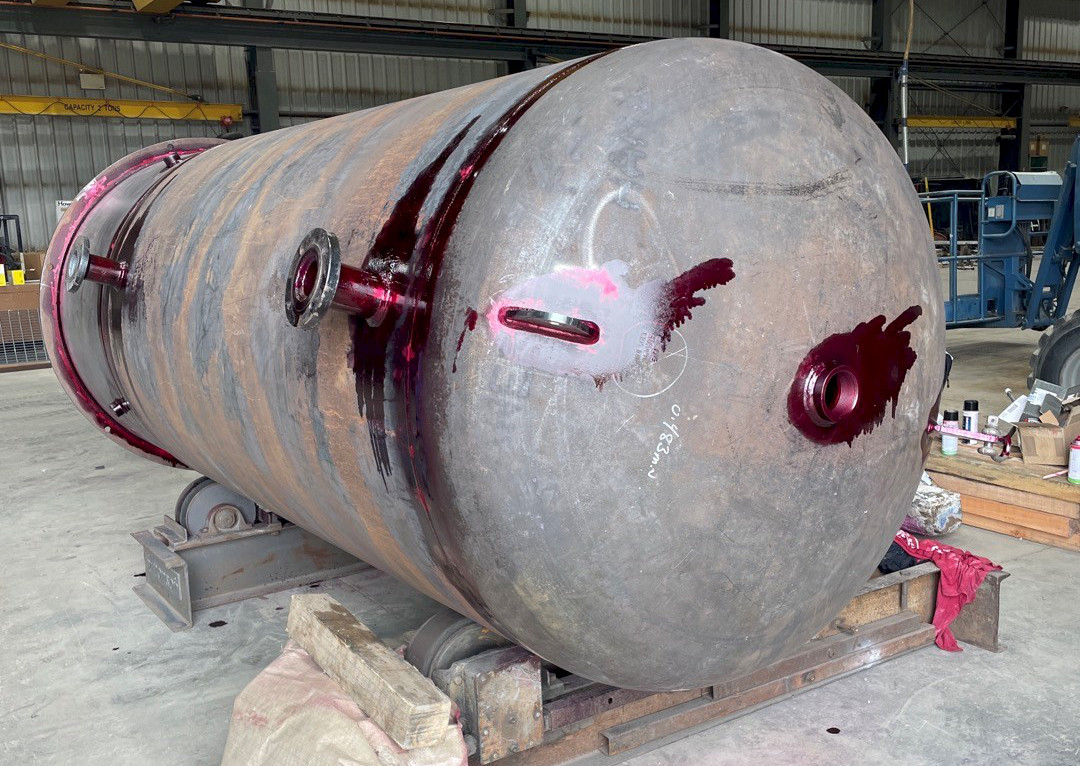Comprehensive Guide to Tank Welding Inspection for Security and High quality
Comprehensive Guide to Tank Welding Inspection for Security and High quality
Blog Article
A Detailed Summary of Tank Welding Inspection Specifications and Methodologies for Improved Weld Top Quality and Efficiency
The importance of welding assessment requirements in the production of containers can not be overemphasized, as they work as the backbone for making sure weld integrity and functional integrity. Different examination techniques, consisting of aesthetic evaluations and advanced non-destructive testing approaches, are critical in recognizing prospective imperfections that could compromise efficiency. Moreover, sticking to regulatory standards not only enhances weld quality but likewise mitigates the risk of costly failings. As we discover the nuances of these approaches, it ends up being vital to consider how a methodical strategy can reinvent existing techniques and cause considerable renovations in end results.
Importance of Welding Assessment Requirements

Welding examination requirements include a range of standards, including product specs, welding treatments, and qualifications of personnel associated with the welding procedure. By implementing these criteria, companies can methodically identify and rectify possible issues, consequently minimizing the likelihood of expensive repair work or devastating failings. Furthermore, strenuous examination practices foster a culture of responsibility and precision, motivating welders to preserve high degrees of workmanship.

Typical Welding Assessment Methods


Ultrasonic Examining (UT) is another common strategy, using high-frequency acoustic waves to spot inner defects that might not show up externally. This approach is specifically efficient for determining voids or additions within the weld metal. Magnetic Particle Evaluating (MT) is likewise extensively used, particularly for ferromagnetic products, as it exposes surface and near-surface issues via the application of magnetic fields and ferrous particles.
Additionally, Liquid Penetrant Screening (PT) identifies surface-breaking defects by applying a penetrant to the weld and after that using a designer to extract the penetrant. Each of these techniques adds to a thorough inspection method, making sure that welds satisfy the rigid high quality criteria needed in container building.
Regulative Standards and Conformity
Governing criteria and conformity are crucial elements in making certain the safety and reliability Web Site of bonded frameworks in storage tank building and construction - Tank Welding Inspection. These standards serve to establish minimum demands for material properties, welding procedures, and evaluation methods, thus reducing the risk of architectural failures and improving overall efficiency
Secret organizations, such as the American Culture of Mechanical Designers (ASME) and the American Welding Culture (AWS), provide standards that are widely embraced in the sector. Compliance with these requirements not only ensures adherence to best techniques but additionally satisfies legal and contractual obligations, securing the passions of stakeholders.
Regulative bodies frequently mandate adherence to particular codes, such as ASME Code Section IX for welding credentials and API 650 for bonded containers. These codes detail needs for welding methods, qualifications of workers, and screening methods to confirm weld honesty.
Regular audits and inspections are crucial to maintaining conformity, as they assist identify deviations from developed standards. Non-compliance can cause significant fines, project delays, and security dangers. Thus, a robust understanding of governing requirements and a dedication to conformity are critical dig this in attaining high-grade and sturdy bonded tank frameworks.
Non-Destructive Testing Approaches
Just how can the integrity of welded frameworks be guaranteed without creating damages? Non-destructive screening (NDT) approaches provide a robust remedy, allowing inspectors to evaluate weld quality without endangering the product - Tank Welding Inspection. Amongst one of the most common NDT strategies are ultrasonic screening (UT), radiographic screening (RT), magnetic particle screening (MT), and color penetrant screening (PT)
Ultrasonic screening uses high-frequency acoustic waves to identify inner problems and identify material properties. It offers specific dimensions and is particularly efficient for thick materials. Radiographic screening entails passing X-rays or gamma rays via the weld, producing pictures that disclose architectural issues such as cracks or gaps. This technique is vital for evaluating the integrity of intricate welds.
Magnetic particle testing is fit for ferromagnetic products, where electromagnetic fields expose surface and near-surface gaps. Color penetrant testing makes use of a fluid dye to highlight surface-breaking problems, making it an efficient approach for non-porous materials.
Each of these NDT approaches has distinct advantages, permitting thorough assessments tailored to details products and welding procedures. By applying these methods, markets can make certain the integrity and safety of welded frameworks, ultimately improving total efficiency.
Enhancing Weld Top Quality With Evaluation
Efficient assessment plays an essential role in improving weld high blog here quality, acting as an important checkpoint in the construction procedure. By identifying prospective defects early, examinations alleviate the risk of endangered structural stability and make certain conformity with market standards. Utilizing a combination of aesthetic assessments, non-destructive screening (NDT) methods, and mechanical analyses, inspectors can detect concerns such as porosity, splits, and insufficient fusion.
Applying a robust examination procedure not just enhances the overall top quality of welds however additionally fosters a society of liability amongst welders and fabricators. Normal training and certification of assessment personnel make sure that they are furnished with the essential abilities to identify and address possible troubles effectively. This proactive approach reduces rework and connected expenses, eventually adding to predict effectiveness.
Moreover, extensive documents of assessment searchings for provides valuable understandings into repeating issues, helping with continuous renovation in welding methods. By leveraging advanced modern technologies, such as automated ultrasonic testing or electronic radiography, weld top quality can be boosted through much more exact examinations. Finally, a rigorous examination procedure is indispensable in accomplishing high-quality welds, guaranteeing security, integrity, and durability in container manufacture.
Conclusion
In final thought, the application of extensive storage tank welding inspection criteria and techniques is important for making sure weld honesty and efficiency. By making use of a combination of visual inspections, non-destructive testing methods, and adherence to governing requirements, companies can properly identify and minimize prospective issues.
Report this page